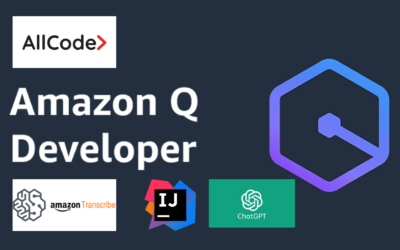Share

Amazon Amplify
Why Amazon Amplify?
At its core, AWS Amplify is a suite of purpose-built tools and capabilities meant to make building full-stack applications on AWS a breeze for front-end web and mobile developers. Using Amplify’s web and mobile app backends, you can create an app’s front end graphically, connect your app in minutes, and manage content outside of Amazon’s UI.. With no knowledge of cloud computing, you may more quickly get your items to market and expand your company. In order to construct a complete application, encompassing front-end user interfaces and back-end systems, you must utilize a visual programming language like Java or C++. You can link your web and mobile apps to new and current AWS resources with just a few lines of code. Within minutes, static websites, single-page web applications, and server-side rendered applications can all be built and hosted.
How it Works
Build

Image sourced from Amazon Web Services
Ship

Image sourced from Amazon Web Services
Scale and manage

Image sourced from Amazon Web Services
Tools
It’s possible to design and launch a feature-rich, extendable app in only a few days using the AWS Amplify tools.
Amplify Studio
Visual development environment AWS Amplify Studio allows developers to design and distribute web and mobile applications within hours rather than weeks or months. Amplify Studio enables rapid development of an app backend, design of advanced user interface (UI) components, and the connection of a UI to the backend. Exporting your app’s UI and infrastructure as code using Amplify Studio gives you complete creative control over the final product. Without the need for cloud or AWS experience, you can get your product out the door faster and scale more easily.
Features
- Backend development in a graphical user interface
It is possible to design a data model, user authentication, and file storage without any knowledge of backend programming or programming languages by using a visual development environment (VDE).
- Extend your AWS CDK
Cloud Development Kit makes it easy to add AWS services to Amplify Studio that are not previously available (CDK).
- Use in conjunction with Amplify Library Software
If you want to connect mobile and web apps to Amplify Studio-written backends, use the Amplify Libraries for each of these platforms (JavaScript).
- A library of pre-built UI components
You may choose and configure React components like buttons, forms, and marketing templates to match the look and feel of your business.
- Configuration from front to back
In just a few simple steps, you may connect data sources in your cloud-connected app’s backend to the front-end UI components you’ve created.
- Management of data, files, and users.
The AWS Management Console can’t be used to manage users and groups, application content, or files.
- Supports a number of different settings.
Using pre-production settings allows you to test your changes before they go into effect.
Amplify Hosting
For quick, safe, and reliable static and server-side rendered apps, AWS Amplify Hosting is a fully-managed CI/CD and hosting service. Newer web frameworks such as React and Angular as well as older ones like Gatsby, Hugo and Jekyll are all supported by the framework.
Features
- Implementing CI/CD in its entirety
Connecting your git branches allows you to make changes to both the front end and the back end at the same time.
- Previews for upcoming pull requests
Build new features before going online to avoid disrupting production. Create new environments via pull requests.
- Custom domains that are simple to set up
With a single mouse click, you may confirm the ownership of a custom domain. A feature’s branches are given their own domain right away. A free SSL certificate is available for both custom and non-custom domains.
- Monitoring
Real-time monitoring of your app’s hosting stats. Custom alerts can be set up to tell you when a metric crosses a predetermined threshold.
- The user experience can be enhanced through the use of redirects and custom headers.
Host your site with ease and create unique headers and redirects.
- Encryption of user data
Assign a login and password to internal stakeholders so they can gain access to features that have not yet been released.
DataStore
On-device storage engine Amplify DataStore synchronises data across mobile and web apps and your database on Amazon Web Services to let you construct real-time or offline applications more quickly. Using a visual or code-based interface, build your data model with relationships to speed up the development of your mobile application.
Features
- Visual data modeling
Amplify Studio’s visual interface makes it easy to define backend models, fields, and item relationships.
- Offline data access
DataStore stores data locally on the device, ensuring the app can access it even offline. When a network connection is available, all data download or update requests are first routed through the local DataStore, with changes then synced to the cloud.
- Fine-grained authorization
Fine-grained access control for authorized individuals and groups is seamlessly integrated into the data model. Authenticated users and groups can have precise access control to backend resources thanks to the data model’s built-in authorization rules.
- Content management
Content writers and testers can access app data through Amplify Studio. Content can be saved in markdown format for rich text rendering.
- Web and mobile front-end libraries
DataStore client libraries provide a simple API interface for querying, updating, sorting, and filtering data in your app. It automatically handles conflict resolution by merging different object versions in the database.

Download list of all AWS Services PDF
Download our free PDF list of all AWS services. In this list, you will get all of the AWS services in a PDF file that contains descriptions and links on how to get started.
Storage
Amplify Storage is a great place to store user-generated content and app information. Avoid storing media files in the app’s data storage or in a public, secured, or private cloud. Use cloud storage to speed up the transition from prototype to production.
Features
- User file storage
Using the Amplify library, you may upload files from your app to cloud storage right from your app’s code.
- App data in NoSQL
Your app’s data can be retrieved from Amazon DynamoDB using a REST API and a Lambda function.
- Event-driven actions
An AWS Lambda function will be called whenever a piece of content is added to the site.
- Activity tracking
To better understand trends and how users interact with your mobile app, collect statistics on upload and download activity automatically.
- Multiple file access levels
Allow both public and private files, as well as those that are password-protected. The Amplify CLI will automatically configure access levels and IAM policies for both authorised and visitor users.
- Web and mobile front-end libraries
The Amplify web and mobile storage client libraries provide a simple API interface (Storage.get and Storage.put) that can be implemented in just a few lines of code for designing file storage experiences for your app. A number of APIs are available from Amplify, including one that tracks file upload and download activity, as well as the ability to retry uploads.
Need help on AWS?
AWS Partners, such as AllCode, are trusted and recommended by Amazon Web Services to help you deliver with confidence. AllCode employs the same mission-critical best practices and services that power Amazon’s monstrous ecommerce platform.
AWS Amplify Pricing
For the Amplify Framework (Libraries, CLI, and UI Components), you only pay for what you utilize from Amazon’s AWS services. There are no additional costs associated with using the Amplify Framework.

Text AWS to (415) 890-6431
Text us and join the 700+ developers that have chosen to opt-in to receive the latest AWS insights directly to their phone. Don’t worry, we’ll only text you 1-2 times a month and won’t send you any promotional campaigns - just great content!



